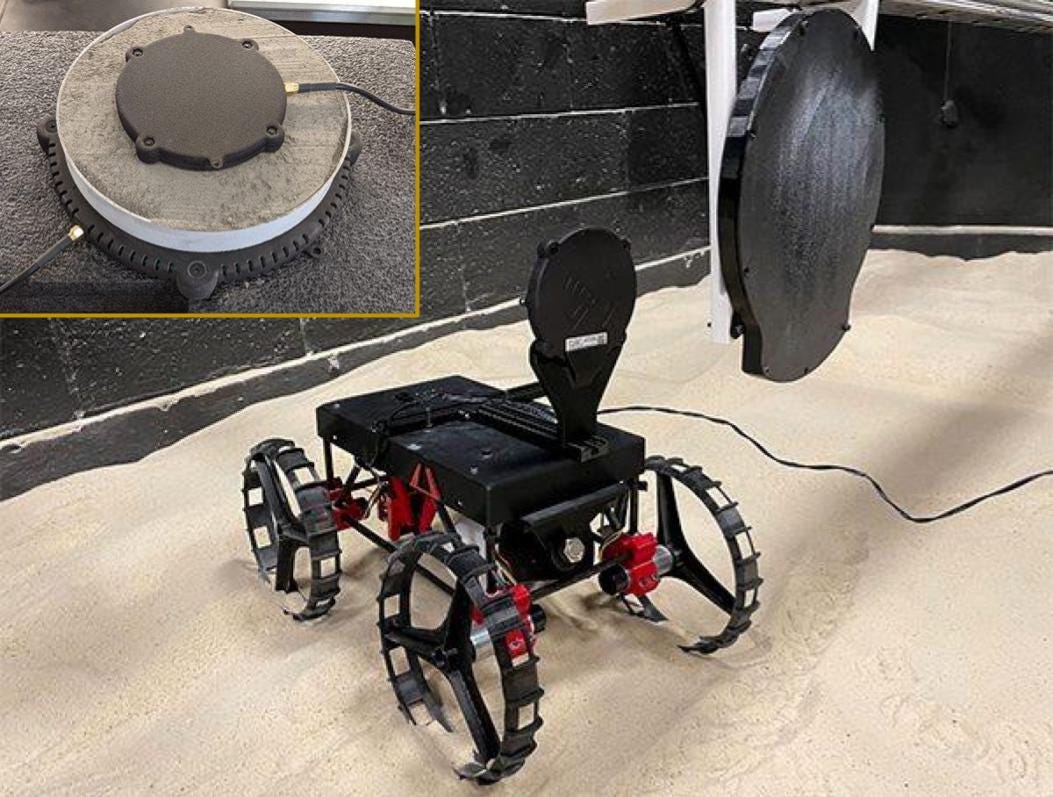Moon Monday #82: Growing NASA-ESA synergy, lunar Starship, wireless power on the Moon, and more updates
NASA and ESA enhance their collaboration on exploring our Moon
At the ESA Ministerial Council meeting in Netherlands on June 15, 2022, NASA and ESA extended their collaboration in several ways, including expanding their cooperation in lunar exploration.
As part of an agreement, UK’s Lunar Pathfinder spacecraft will be deployed into lunar orbit by 2025 by a Moon lander competitively selected by NASA under the agency’s CLPS program. Lunar Pathfinder will operate in a frozen elliptical orbit for at least 8 years, and relay communications between Earth and mission hardware primarily on the Moon’s farside and poles. In return for NASA launching and deploying Pathfinder to lunar orbit, ESA will let NASA use the orbiter to relay-communicate with its lunar hardware on future farside and polar missions. My article on Lunar Pathfinder has more details on the incentives behind this growing NASA-ESA synergy.

In return for ESA’s increasing contributions to Artemis, NASA administrator Bill Nelson said that the agency intends to have a European astronaut land on the Moon in a future mission post the first crewed landing, the same intent as for Japan. ESA has already bagged three seats for their astronauts on the NASA-led Gateway lunar station in return for contributing the Orion spacecraft’s critical service module and the Gateway’s ESPRIT communications and refueling module. The first European astronaut on the Gateway could launch onboard Artemis IV, which will deliver the ESA- and JAXA-developed International Habitation module (i-HAB) to the station no earlier than 2027.
Another milestone for SpaceX Starship, another step towards crewed lunar landing
Last week, SpaceX cleared FAA’s environmental review for conducting orbital launches of its Starship rocket from its Texas test site, with only several relatively minor issues to be mitigated prior to any liftoff. I like how The Orbital Index (a Moon Monday sponsor) summarized the result:
While it’s somewhat hard to imagine that the largest rocket in history will not significantly impact the adjacent state park, public beach, and nearby wildlife refuge, it’s completely unsurprising that a federal agency has provided a way forward for the company tasked with building NASA’s HLS to conduct testing of the launch system that will deliver that vehicle to space.
While SpaceX still needs to acquire a launch license before Starship’s first orbital attempt, this is a huge milestone in working towards landing the first Artemis astronauts on the Moon for which NASA has so far selected the lunar variant of Starship as the primary lander. At the same time, there’s not much public information about the progress of lunar Starship other than the Artemis Mission Manager, Michael Sarafin, just mentioning last week that (lunar) Starship “is really moving along and making great progress.”
Many thanks to Epsilon3 for sponsoring this week’s Moon Monday.
Thanks also to Parvathy Prem, David Blewett, Arun Raghavan, Matt Ryall and Narayan Prasad for supporting my independent writing.
Astrobotic develops wireless power delivery for the Moon
Supported by a $5.8 million NASA Tipping Point contract, Astrobotic and partners have been developing a wireless charging system for hardware on the Moon to survive the frigid lunar nights. They recently successfully tested power transmission with prototype sending and receiving hardware on Earth under simulated lunar polar conditions of wide temperature ranges and with 4 centimeters of lunar soil simulant in between. Astrobotic will next develop a space-qualified engineering model of the wireless charging system for future use in actual lunar missions both by itself and its customers.

Astrobotic’s future landers and notably their upcoming vertical solar panels might transmit power wirelessly to rovers and other hardware needing to survive the lunar night. Astrobotic intends for the first such test to be for their shoebox-sized, 13-kilogram MoonRanger rover, which boasts autonomous navigation and mapping capabilities. A MoonRanger is set to fly onboard Masten’s 1st Moon landing mission in 2023 as part of NASA’s CLPS program but it’s probably too early a mission to feature wireless power delivery.
ESA is asking scientists to propose science payloads for the Moon
ESA is expanding its SciSpacE program from Earth to the International Space Station and our Moon, and with it is asking researchers across its member (and affiliated) states to submit lunar science payload proposals that can be developed to launch to the Moon within three years of an identified flight opportunity. Selected proposals next year will be part of a pool from which they might be chosen for a launch starting 2025 either on an international mission, a commercial delivery like CLPS or an ESA-equivalent program, or ESA’s own mission. The pool of lunar-ready payloads will be reviewed, refreshed and topped up every three years.
More Moon
The fully stacked SLS rocket is all set for its fourth wet dress rehearsal attempt today, June 20. The timeline of fueling operations along with key milestones is available on NASA’s official Artemis Blog. If the test is successful this time around, NASA could launch the Artemis I Moon mission in late August at best though September is more likely.
The NASA-funded and Advanced Space-built CAPSTONE spacecraft is now targeting launch on June 25. The mission intends to prove the feasibility of the unique fuel-saving elliptical lunar orbit that the NASA-led international Gateway station will use later this decade.
In Phase 2 of the $3 million Break the Ice Lunar Challenge, NASA is inviting the public to design and build an efficient prototype capable of extracting and transporting icy regolith on the Moon.
A new paper from the Open Lunar Foundation (a Moon Monday sponsor) proposes that space agencies, lunar companies, and all such stakeholders should together develop a Moon resources “scorecard”, wherein the abundance/scarcity and renewability of key industrial and scientific lunar resources are quantified and tracked so that space policies make long-term sense as we try to build a peaceful, sustainable lunar economy.
ESA challenged students from eight schools across Europe to create Artemis-inspired artwork as we return to the Moon with humans and more robots. From the 24 nice entries, a jury has chosen two to accompany the third European Service Module for the crewed Orion spacecraft shipping soon to the US.

Credits: Selma Moseng and Linn Hansen
→ Browse the Blog | About | Donate ♡
